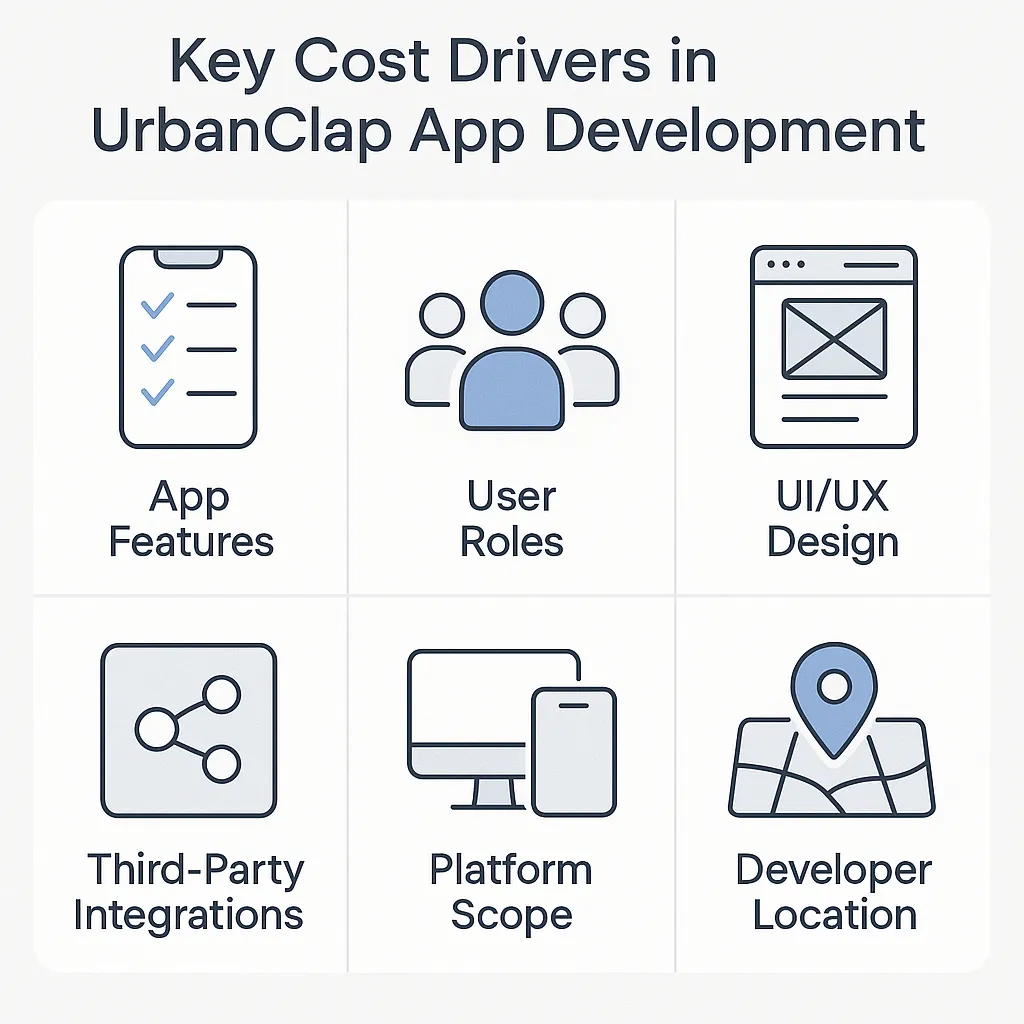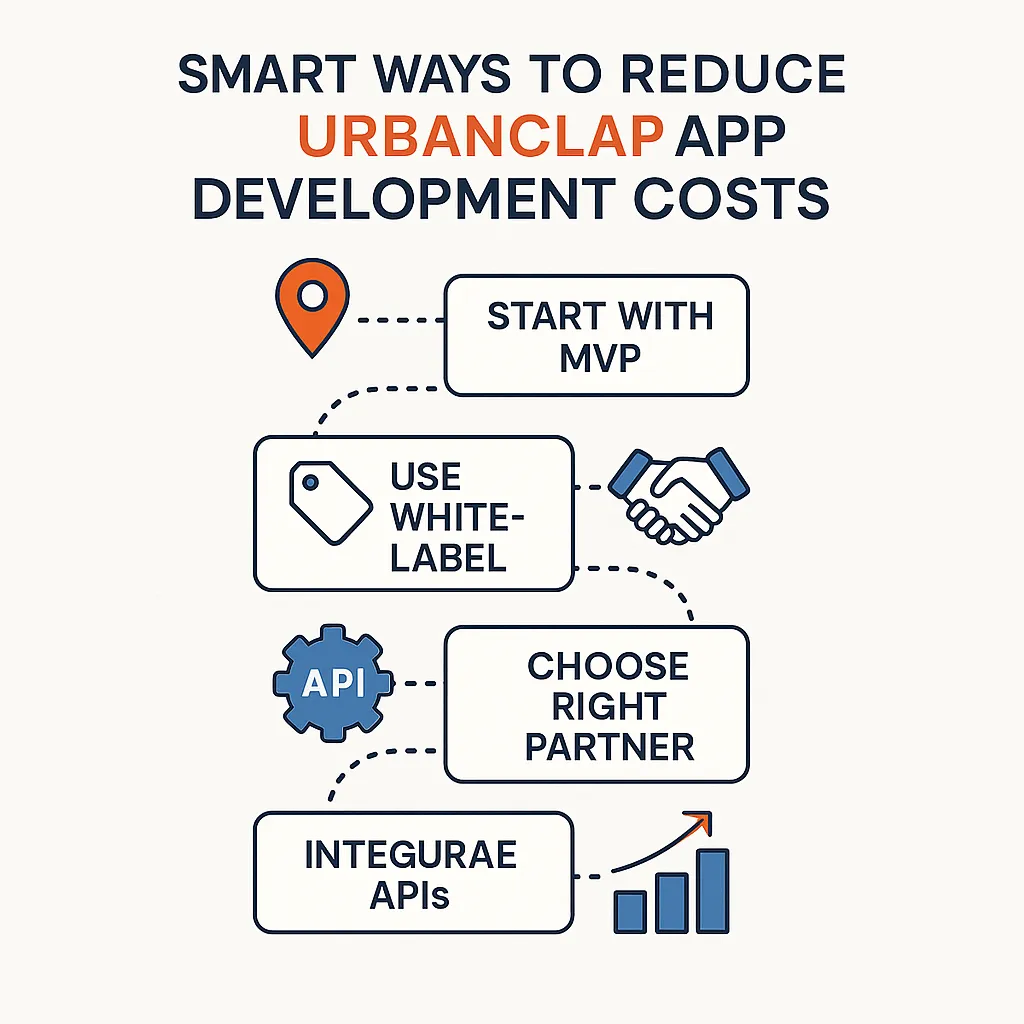UrbanClap App Development Cost in 2026 : Full Guide
Create a powerful, customizable streaming solution with Miracuves’ UrbanClap, equipped with high-performance features and next-gen technology.
Thinking about launching a home services marketplace like UrbanClap (now Urban Company)? Before you dive into features or partner onboarding, there’s one essential question to ask: what’s the real cost of building an app like UrbanClap?
An UrbanClap-style app isn’t just a service directory it’s a full-featured ecosystem that connects users with professionals across beauty, cleaning, repairs, fitness, and more. It requires real-time scheduling, payments, location tracking, reviews, and strong backend infrastructure to manage bookings and service providers.
Whether you’re a startup founder or SaaS entrepreneur targeting the home services sector, understanding the UrbanClap app development cost is crucial for smart budgeting, strategic planning, and avoiding scope creep.
In this guide, we’ll walk through the key cost drivers, regional pricing, complexity levels, hidden fees, and proven ways to optimize your investment all tailored for 2025’s on-demand platform landscape.

Key Factors That Influence Development Cost
There’s no one-size-fits-all pricing for UrbanClap-like app development. Your total cost depends on how advanced your platform is — and how you choose to build it.
Here are the biggest cost drivers:
App Features & Complexity → Simple booking tools are cheaper than platforms with advanced filters, service subscriptions, live tracking, or multi-role dashboards.
User Roles → With at least three roles (customer, service provider, admin), development requires modular architecture and distinct user flows.
UI/UX Design → A clean, intuitive interface with smooth booking, payments, and real-time updates adds design hours and front-end dev work.
Third-Party Integrations → Maps, payment gateways, SMS/email, ratings, KYC, and push notifications — all come with development and subscription costs.
Platforms Supported → Separate apps for iOS, Android, and Web increase effort unless you opt for cross-platform solutions.
Customization vs. White-Label → Clone scripts lower the cost but limit flexibility. Fully custom builds offer long-term scalability at a higher upfront cost.
Team Location → Developers in India or Eastern Europe charge significantly less than U.S. or EU-based firms — without compromising quality when experienced.
UrbanClap App Development Cost by App Complexity (2025 Guide)
To give you a clearer picture, here’s a breakdown of average development costs based on how complex your on-demand app is.
This includes UI/UX design, frontend/backend development, QA testing, and basic post-launch support.
|
App Type
|
Estimated Cost Range (USD)
|
Description
|
|---|---|---|
|
MVP (Minimum Viable Product)
|
$12,000 – $25,000
|
Basic features: user registration, service categories, bookings, reviews, provider panel
|
|
Standard Version
|
$25,000 – $60,000
|
Adds search filters, real-time tracking, in-app chat, coupon system, and admin panel
|
|
Full-Featured App
|
$60,000 – $120,000+
|
Custom UI/UX, AI recommendations, multi-language, subscription modules, advanced analytics
|
UrbanClap-Style On-Demand Service App Development Cost by Miracuves (2026 Pricing)
To help you estimate your on-demand service platform’s development budget, here’s a breakdown of the UrbanClap Clone App Development Cost by Miracuves, organized by app type and feature complexity.
This pricing includes UI/UX design, backend integration, and deployment — excluding third-party APIs, hosting, or marketing expenses.
|
App Type
|
Estimated Cost Range (USD)
|
Description
|
|---|---|---|
|
MVP (Minimum Viable Product)
|
$999 – $1,499
|
Basic setup with user registration, service categories, booking options, reviews, and provider management — perfect for startups validating their idea.
|
|
Standard Version
|
$1,500 – $2,099
|
Adds real-time tracking, secure payments, in-app chat, offers system, and admin controls — ideal for scaling into multi-service operations.
|
|
Full-Featured App
|
$2,899 (Miracuves)
|
Complete Web + App + Admin platform with advanced analytics, AI-driven recommendations, subscription systems, and multilingual support. Delivered with full source code ownership.
|
Note: The prices above reflect Miracuves’ 2025 development-only structure. Hosting, SMS APIs, and CRM integrations are charged separately.
Launch your UrbanClap-style app in just 3–9 days with Miracuves — a complete, scalable, and brand-ready on-demand platform.
Average Cost Estimates by Region
Development cost is largely impacted by the location of your tech team. Here’s how pricing breaks down by region based on hourly rates and full project estimates:
|
Region
|
Hourly Rate (USD)
|
Typical Cost for Standard App
|
|---|---|---|
|
North America
|
$100 – $200/hr
|
$100,000 – $200,000+
|
|
Western Europe
|
$80 – $150/hr
|
$80,000 – $160,000+
|
|
Eastern Europe
|
$40 – $80/hr
|
$40,000 – $90,000+
|
|
India & Southeast Asia
|
$20 – $50/hr
|
$20,000 – $60,000+
|
Partnering with a specialized offshore team like Miracuves allows you to balance cost and quality for a high-performance launch.
Cost Breakdown by Development Stage : UrbanClap Clone
Understanding how your budget gets allocated across the development lifecycle helps you avoid unpleasant surprises — and ensures you’re investing wisely at every stage of your UrbanClap clone app journey.
Here’s a typical cost distribution breakdown:
|
Development Stage
|
Estimated % of Total Cost
|
Includes
|
|---|---|---|
|
Discovery & Planning
|
5–10%
|
Market research, competitor analysis, defining user personas, feature scoping, technical requirements.
|
|
UI/UX Design
|
10–15%
|
Wireframing, prototyping, responsive design, visual branding, user experience mapping.
|
|
Frontend & Backend Dev
|
40–50%
|
Core feature development, database architecture, APIs, payment integrations, dashboard and logic build.
|
|
Testing & QA
|
10–15%
|
Manual and automated testing, bug fixing, device/browser compatibility checks, performance tuning.
|
|
Deployment & Launch
|
5–10%
|
App store submission (Android/iOS), server setup, production deployment, performance monitoring tools.
|
|
Maintenance & Updates
|
10–20%
|
Post-launch bug fixes, new features, server maintenance, user support, compliance updates.
|

How to Reduce UrbanClap App Development Costs (Without Compromising Quality)
Building a powerful UrbanClap-like app is a serious investment, but smart choices can lower costs without hurting quality or user trust.
Here’s how:
Start lean with an MVP → Prioritize core features like booking, search, payment, and feedback. Expand after market validation.
Use white-label solutions → Clone scripts speed up delivery and reduce cost while allowing for future customization.
Choose the right development partner → Look for a team with on-demand platform experience and full-cycle capabilities.
Opt for pre-integrated APIs → Reduces backend work and enables faster deployment.
Build modularly → Add advanced features like subscriptions, in-app wallets, or CRM only when you need them.
A phased development strategy gives you the flexibility to grow without draining your budget. Learn how to hire the best UrbanClap clone developer for your specific tech and budget needs
Choose the Right Development Partner
Even with a clear vision and budget, the success of your platform hinges on the right development team. A trusted partner doesn’t just build features — they help you scale, adapt, and win in a competitive market.
When choosing an UrbanClap clone development company, look for:
Proven experience in building on-demand service platforms
A portfolio that includes user-focused, scalable apps
Full-service delivery — from design to post-launch support
Clear documentation and reliable communication
At Miracuves, we build secure, high-performing UrbanClap clones tailored for fast-moving startups. Whether you’re targeting a local city or a global marketplace, we help you go live quickly — and grow confidently.
Let us handle the tech while you focus on building your brand and partner network.
Conclusion
The cost to develop an UrbanClap-like app in 2025 depends on your platform’s scope, regional choices, complexity, and delivery model. From $30,000 MVPs to $250,000+ full-feature platforms, there’s a wide range — but with smart planning and the right partner, you can launch a market-ready solution without overspending.
Ready to build your UrbanClap-style app?
Talk to Miracuves today for a tailored development estimate and launch strategy.
For more guides on marketplace apps, revenue models, or growth tactics, explore the rest of our clone app series.
Frequently Asked Questions
Depending on features and region, the development cost for an UrbanClap-style app typically ranges from $30,000 for an MVP to $250,000+ for a full marketplace build. However, with Miracuves’ ready-made UrbanClap Clone, you can launch the same platform for just $2,899 — complete with core service modules, admin panels, and rapid deployment within 3–9 days.
At minimum: service listings, booking engine, user/provider login, payments, and basic ratings.
Yes. Clone solutions reduce development time and cost while still allowing for brand customization and upgrades.
An MVP takes 3–4 months, while a full-featured platform may require 6–9 months, depending on complexity. However, using Miracuves’ ready-made UrbanClap Clone, the same platform can be developed and launched within just 3–9 days, ensuring faster market entry.
Depending on features and region, the development cost for an UrbanClap-style app typically ranges from $30,000 for an MVP to $250,000+ for a full marketplace build. However, with Miracuves’ ready-made UrbanClap Clone, you can launch the same platform for just $2,899 — complete with core service modules, admin panels, and rapid deployment within 3–6 days.



